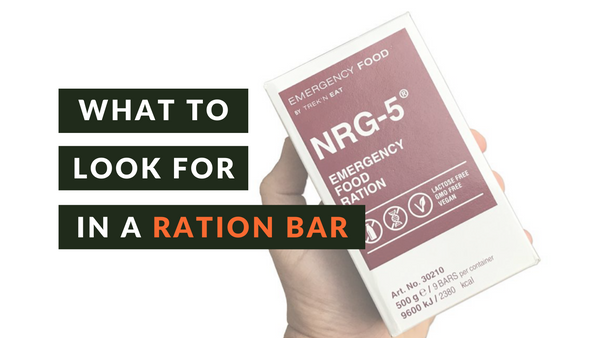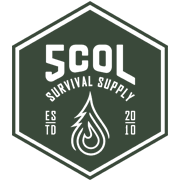
What to Look For in a Ration Bar
Emergency rations offer a host of benefits.
The bars come in lightweight, vacuum-sealed packaging that can withstand extreme temperatures, storms, pests, and moisture. They’re non-thirst provoking and ready-to-eat, and each bar contains the same amount of calories — making it easy to split them evenly among family members.
In low-energy survival scenarios, such as awaiting rescue after a hurricane, these bars could sustain you until helps arrives.
But how do you choose the right brand?
The leading ration brands are near identical in packaging and calories. Where they differ is in their ingredients, taste, and shelf life.
Here’s why those differences matter:
Nutritional Value
When it comes to emergency rations, it makes sense to pay attention to the number of calories packed into each serving. Calories are units of energy, and energy is essential to survival.
However, not all calories provide an equal amount of energy. If they did, four cookies would deliver the same boost as an avocado.
That isn’t the case.
Aside from the fact that cookies contain processed sugar and unhealthy fats, they also lack the nutrients our bodies need to function: protein, carbohydrates, healthy fats, water, vitamins, and minerals.
These nutrients are essential for energy, brain function, and fighting off disease — all of which you would need in a survival scenario.
Check the nutrition label for percentages of daily vitamins and minerals, as well as the ingredient list. Some ration bars contain allergens and other ingredients that may be inconsistent with dietary needs — though the industry is trending toward inclusivity.
NRG-5 Emergency Food Rations meet FDA daily requirements for Vitamins A, D3, B12, C, and E, as well as Calcium, Potassium, Magnesium, and Iron.
The bars are also nut-free, lactose-free, non-GMO, and vegan — ensuring that everyone can benefit from them, regardless of dietary needs.

Taste
It can be tempting to choose a ration bar that looks and tastes like a sugar cookie, but remember: this isn’t a snack.
Ration bars should be consumed as a last resort to stave off starvation. If you and your family are starving, you will need to “ration” food to survive until help arrives. That will be much easier to do if the bars in your pack taste bland.
For example, baked wheat comes through in each bite of NRG-5 bars, giving them a plain cereal taste that’s palatable but won’t cause you to overeat.
The simple ingredients tout other benefits as well:
The individually-packaged bars break in half easily without crumbling, and they’re suitable for children as young as six months old. They can also be mashed into hot or cold porridge or turned into an energy drink for easier consumption.
Shelf Life
Rations have come a long way since the days of hardtack, which was often moldy and worm-infested by the time it reached Civil War soldiers.
We can now purchase rations, stash them in a car or emergency kit, and forget about them for years without having to worry about heat, moisture, or pests — all thanks to air-tight packaging.
There is one hiccup, however.
The typical shelf-life for emergency rations is five years, meaning “five years from the manufacturing date.”
Since dealers purchase rations in bulk and stock them until they’re sold, the rations you receive may be months or even years old. That will cut into the time you have left.
This isn’t a product you will want to replace often, so the longer the shelf life, the better.
With a 20-year shelf life, NRG-5 ration bars are a buy-and-forget item that will give you and the other members of your household peace of mind.
Jess Williams is a freelance writer specializing in survival and emergency preparedness. Check out her website pocketknifeandpen.com for more information.
